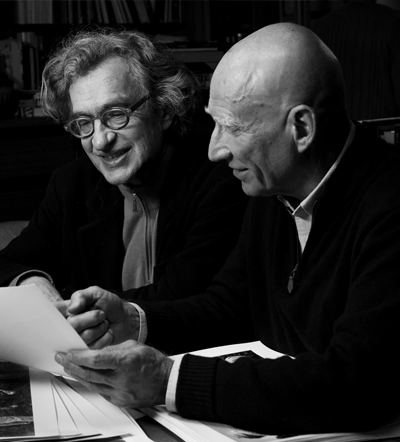
Wim Wenders and Sebastãio Salgado
Filmmaker Wim Wenders returns this month with his Oscar-nominated documentary The Salt of the Earth, a striking exploration of the work of Brazilian photographer Sebastãio Salgado. In a directorial collaboration with Salgado’s son, Juliano, Wenders accompanied the photographer across the globe, from the remote Siberian North to the desert plains of Namibia. Revered for his austere and haunting images, Salgado emerged in 1980s with striking portraits of migrant laborers; his work traces some of the most severe machinations of modern history – from the Rwandan genocide to the refugee crisis endemic across much of the Middle East.
Wenders was a long-time admirer of Salgado’s photographs and they struck up an easy friendship; he describes Salgado as a natural lover of people, who entirely immerses himself into the stories of his subjects: “I would walk with him through the city, and see him meet people he’d never met before, and two minutes later he’d have this closeness with them. It’s something in the optimism of his looking – he puts himself on the same level as other people, and that’s a rare gift. Most photographers want to have distance. He always goes close, his photography is never on a long lens, he’s always in the middle of things, never in the corner of the room.”
Salgado’s son Juliano echoes Wenders statements, describing his father’s ability to create effortless bonds: “One of the things that surprised me when we traveled together was how quickly he can establish a bond with someone who’s a complete stranger to him.




 Facebook
Facebook Permalink
Permalink Digg
Digg Reddit
Reddit LinkedIn
LinkedIn StumbleUpon
StumbleUpon Tumblr
Tumblr

